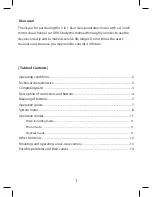
CHEETAH Hardware User’s Manual
Imperx, Inc.
Rev. 6.2
6421 Congress Ave.
7/7/2015
Boca Raton, FL 33487
+1 (561) 989-0006
40 of 152
Examples of C2880 frame rate performance at full resolution and within selected
AOIs for 8, 10 and 12-bit digitization are described in Table 2.3.
C2880 Frame
Rates (fps)
12-bit,
CL 4-tap
10-bit,
CL 8-tap
8-bit, CL
10-tap
Full Resolution
50
80
129
1920 x 1080
143
241
241
1280 x 720
202
342
342
640 x 480
275
473
473
Table 2.3
C2880 Maximum Frame Rate for various AOIs
2.6 SUBSAMPLING
2.6.1 Pixel Averaging
The principal objective of the averaging function is to reduce the image resolution with better final
image quality than a sub-sampling function. Sub-sampling as opposed to averaging has the
advantage of increasing the output frame rate by reducing the number of rows readout, but also
introduces aliasing in the final image. Pixel averaging reduces the output resolution by averaging
several pixels together and has the advantage of reducing aliasing
and
reducing noise which
increases SNR. Averaging decimation, however, does not increase output frame rate.
It is possible to apply both averaging and sub-sampling decimation simultaneously to gain both
improvements in frame rate and improvements in SNR while minimizing aliasing.The camera
offers a 4:1 (read as “four into one”) and a 9:1 (nine into one) averaging function, compatible with
both monochrome and color (Bayer) cameras. Averaging four pixels together reduces the temporal
noise and increasing sensitivity by a factor of 2, while averaging 9 pixels together reduces the noise
by a factor of 3.
The graphic below illustrates the concept of 4:1 averaging for a monochrome image sensor. The
values of pixels P1, P2, P3 and P4 are summed together arithmetically and the result is divided by 4
to achieve a pure arithmetic average of the 4 adjacent pixels.
















































